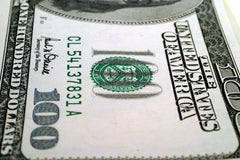The History of the Superdollar

A Superdollar, also referred to as the Supernote or Superbill, is an extremely high-quality counterfeit US $100 note. The United States Government alleged the superbill was printed by unknown entities, namely independent organizations or forgiven governments. The “Supernote” is almost indiscernible from genuine US $100 bills.
In 2011 U.S. Government sources affirmed the Superdollar has been in worldwide circulation since the late 1980s. Many groups have been implicated to have printed Superdollars and opinion on the source of the bills varies. However, the American government deemed the most likely sources of the notes was North Korea.
The Superdollars have been supposedly produced with the highest-quality ink printed on high-quality cotton linen designed to recreate the many security features of U.S. currency. Features like the blue and red security fibers, security thread, and watermark. Supernotes were printed with the intaglio-printing process, but offset printing and laser printing have become the common method.
Authorities who’ve studied Superdollars alongside genuine $100 bills have found many variations of Supernotes. In 2006 the fraudulent bill was believed to have as many as 19 variations. However, since 2006 counterfeiters have improved the processes and even more variations exist today. Early versions of Superbills lacked the magnetic ink used in genuine bills, but later versions of the counterfeits corrected this.
Great Britain
From 2002 to 2005, in two different sting operations, called "Operation Royal Charm" and "Operation Smoking Dragon," resulted in US authorities arresting over 80 individuals on charges of smuggling Superdollars. Approximately $4.5 million of counterfeit bills were seized, but no conclusive origin of the Supernotes was established.
Also in 2005, British criminals were convicted of conspiracy to counterfeit US currency in the UK. The Secret Service recovered $3.5 million of Superdollars that the Bank of England stated were of exceptional quality. The counterfeits admitted to printing the Supernotes and the gang bragged they were printing $500,000 a day.
The Secret Service reported that $89 million of US counterfeit currency was recovered in 2013. Several US criminals were convicted of printing Superdollars with laser printers, and a graphic artist was sentenced in 2014 to 12 years in prison for operating a crew that produced almost $1.5 million in the counterfeit bills.
North Korea
Since 1989 the Secret Service estimates North Korea has printed over $40 million in Superdollars at the Pyongsong Trademark Factory. Many North Korean diplomats were arrested on suspicion of passing Supernotes, but escaped prosecution by invoking diplomatic immunity. CNN reported on May 18, 2006 that banks in Japan placed sanctions on Banco Delta Asia in February of 2006 that were identical to sanctions levied by the US. In August, the Sankei Shimbun reported North Korea opened over 20 bank accounts in 10 different countries where it was determined the intent was to launder Superbills.
Iran
Before the 1979 Revolution Iran used the same intaglio printing machines as the US to print its currency and there was widespread speculation Iran was using their machines to print Supernotes.
Internal Suspicions
Questions about Superdollars being made in the US started in January 2008 in the McClatchy Washington Bureau, with an article mentioning the CIA's involvement. Kevin Hall, in a January 10, 2008 article for McClatchy Newspaper, "US counterfeiting charges against North Korea based on shaky evidence," reported the United States Central Intelligence Agency had been accused of printing Superdollars to fund secret off-the-books overseas operations. Klaus Bender, another writer of several articles on counterfeiting, stated the Superdollars were of such great quality the bills could have only been made by an official government agency like the CIA.
Other Origins
Several other theories of the Supernote’s origin became popular, with Iran remaining the main suspect whereas others point to criminal organizations in Russia and China. An Israeli think tank, the Institute for Advanced Strategic and Political Studies, pointed to Syria in 2000.
Stopping the Superdollar
In October of 2013 the Treasury Department began circulating a new version of the $100 bill with enhanced security features, such as holograms, that are virtually impossible to counterfeit. However, many Superdollars are still in circulation throughout the world.
To keep safe from superdollars and counterfeits we recommend counterfeit detectors to protect businesses from ending up with fake money. For more on counterfeit money and cash handling news be sure to follow us on iTestCash and our Facebook page.




Comments
Leave a comment